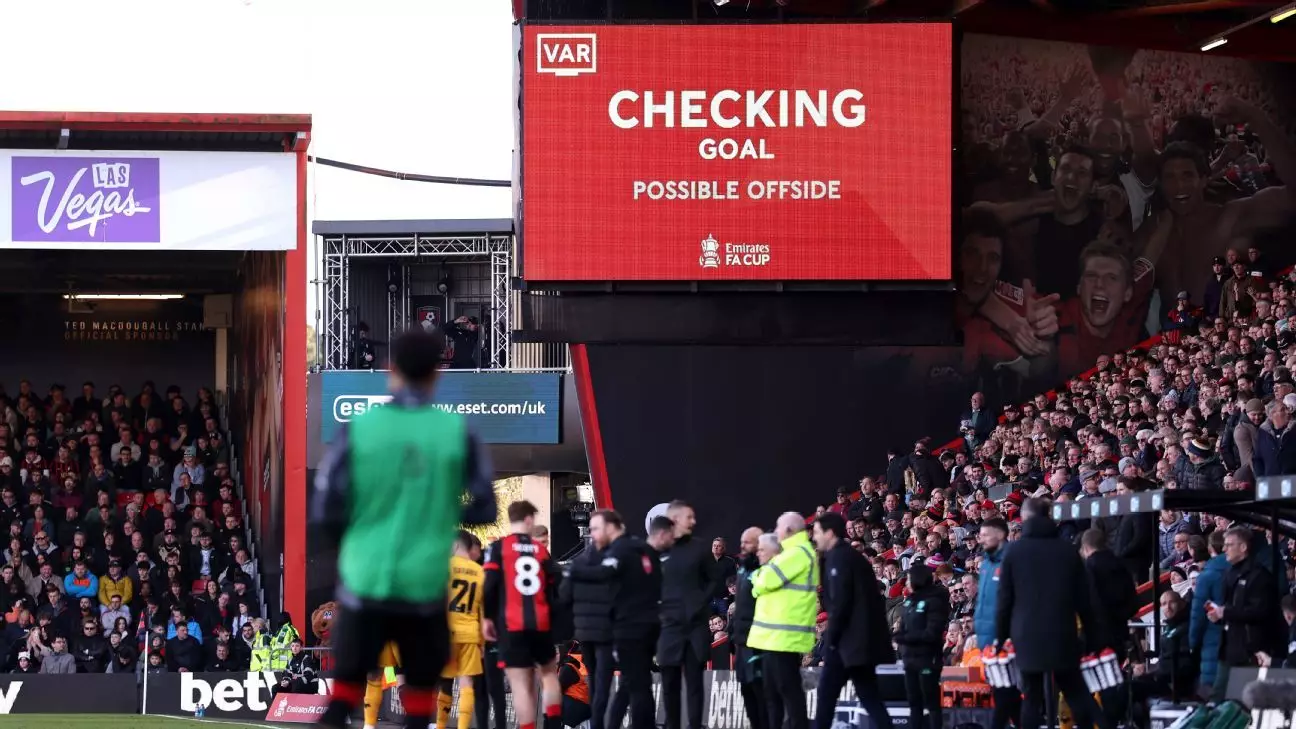In the ever-evolving landscape of football, the Premier League is embarking on a transformative journey by implementing semi-automated offside technology (SAOT) starting from Matchweek 32 on the weekend of April 12-14. This long-anticipated move, which was unanimously voted in by clubs almost a year prior, seeks to revolutionize how offside decisions are managed, ultimately enhancing the flow of the beautiful game. This bold decision underscores the Premier League’s commitment to remain at the forefront of technology in sport, a move that is increasingly necessary given the fast-paced nature of modern football.
The Journey to Implementation: A Tortuous Path
Initially scheduled for a rollout following one of the international breaks in 2024, the introduction of SAOT was hampered by delays surrounding its testing phases. Acknowledging these setbacks, Tony Scholes, the Premier League’s chief football officer, expressed optimism in February about the system’s potential before the season concluded, noting “significant progress” made in that short period. This cautious yet hopeful outlook reflects a broader trend in sports governance where innovations must undergo rigorous testing to ensure reliability— a principle that, while frustrating in its timeline, ultimately serves the integrity of the sport.
The drama surrounding the technology’s testing culminated in a notable incident during the FA Cup quarterfinals, where the première of SAOT experienced a historic VAR review of eight minutes during a match between Bournemouth and Wolverhampton Wanderers. Here lies the paradox of technological advancements: while we anticipate enhancements in efficiency, the reality is often marred by the complexities intrinsic to football scenarios, such as closely positioned players challenging the system’s capability. Despite these hiccups, the Premier League maintains that the SAOT’s design will reduce the average time of offside checks by an impressive 31 seconds, thereby making the game more fluid and less riddled with interruptions.
Evaluating the Premier League’s Technology Choices
Critically analyzing the league’s decision to develop its version of the SAOT raises pertinent questions regarding the practicality and efficiency of this independent approach. Other leagues, such as Serie A and LaLiga, have already adopted SAOT with varying degrees of success. Notably, Serie A’s move came in response to a glaring VAR error, which serves as a reminder that technology, while transformative, can also falter at critical moments. LaLiga has similarly faced scrutiny for inaccuracies, including a controversial decision that denied Robert Lewandowski a goal, bringing the efficacy of this technology into the spotlight.
Scholes was adamant that the Premier League’s homegrown system would emerge as not just the best but also the most accurate and future-proof, dismissing external constructs like the ball chip technology utilized by FIFA and UEFA as not compatible with their current ball suppliers. This self-reliant approach speaks volumes about the league’s ambition; however, it also raises concerns about missed opportunities for collaboration on a global scale. Could the Premier League’s determination to develop its technology blind it to potentially superior systems that have been tested and endorsed elsewhere?
The Future of Offside Decisions in the Premier League
As the Premier League prepares to introduce its SAOT, the football community watches with bated breath. The anticipation of advancements accompanied by the potential pitfalls creates a unique tension— one that could redefine the sport’s officiating landscape. Critics will certainly scrutinize the efficacy of this new strategy as the challenges of imprecision in technology juxtapose with the thrill of innovation. Ultimately, the success of SAOT will hinge not solely on its accuracy but on the Premier League’s ability to adapt and learn from its implementation, ensuring that fans, players, and clubs alike can continue to embrace the spirit of competition without the shadow of controversial decisions looming overhead.
This bold leap into the future of officiating comes with heightened responsibilities. As the cameras and technology converge on the pitch, they must uphold the sanctity of the game while ushering in a new era of fairness and precision. The onus will be on the league, its officials, and the governing bodies to ensure that this technological novelty serves the primary purpose of enhancing the beautiful game.
